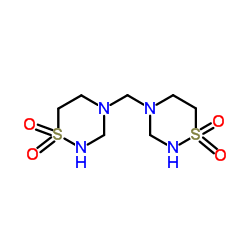Approaches to prolong the use of uncuffed hemodialysis catheters: results of a randomized trial.
Vassilis Filiopoulos, Dimitrios Hadjiyannakos, Ioannis Koutis, Sofia Trompouki, Theodora Micha, Dimitrios Lazarou, Dimosthenis Vlassopoulos
文献索引:Am. J. Nephrol. 33(3) , 260-8, (2011)
全文:HTML全文
摘要
Use of uncuffed catheters (UCs) in hemodialysis patients is common practice. An antibiotic lock has been recommended to prevent catheter-related bacteremia (CRB), although insufficient data are available about the appropriate antimicrobial agent and dose with prolonged use of UCs.This open-label randomized study was conducted to compare gentamicin/heparin (group A) and taurolidine/citrate (group B), as catheter-lock solutions, in 119 chronic hemodialysis patients in whom a total of 150 UCs were placed. A well-matched historical control group (heparin) included 67 UCs in 58 patients (group C).CRB episodes developed in 6 and 8 patients in groups A and B, respectively, significantly fewer than in group C (20 patients). Cumulative CRB-free catheter survival at 90 days was 82% for A and 78% for B, which is significantly higher than the 26% for C. Similar Gram-positive infection rates were found in all groups. The Gram-negative infection rate was significantly lower in B compared to C. No significant differences in thrombosis rates were observed between the groups.Gentamicin/heparin and taurolidine/citrate, used for locking UC, were similarly effective at preventing CRB and catheter thrombosis for up to 3 months, until a functional permanent vascular access became available. Both antimicrobial lock solutions were superior to heparin in CRB prevention with similar thrombosis rates.Copyright © 2011 S. Karger AG, Basel.
相关化合物
| 结构式 | 名称/CAS号 | 分子式 | 全部文献 |
|---|---|---|---|
 |
牛磺罗定
CAS:19388-87-5 |
C7H16N4O4S2 |
|
Taurolidine induces epithelial-mesenchymal transition via up...
2014-11-01 [Int. J. Colorectal Dis. 29(11) , 1339-48, (2014)] |
|
Central venous catheters and catheter locks in children with...
2013-08-01 [Pediatr. Blood Cancer 60(8) , 1292-8, (2013)] |
|
Taurolidine specifically inhibits growth of neuroblastoma ce...
2014-05-01 [J. Pediatr. Hematol. Oncol. 36(4) , e219-23, (2014)] |
|
Efficacy of taurolidine against periodontopathic species--an...
2012-06-01 [Clin. Oral Investig. 16(3) , 735-44, (2012)] |
|
Randomized controlled trial of taurolidine citrate versus he...
2012-04-01 [J. Hosp. Infect. 80(4) , 304-9, (2012)] |